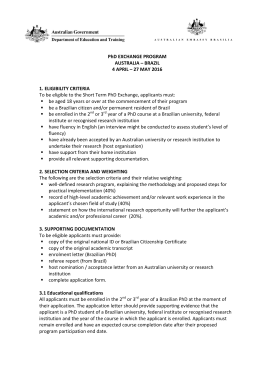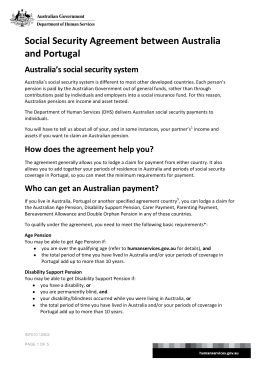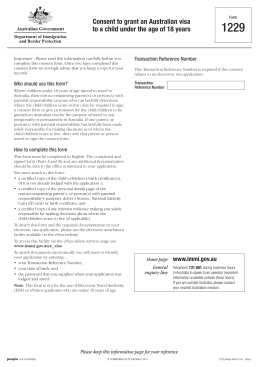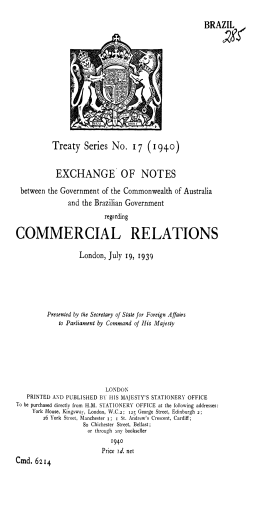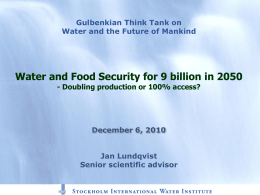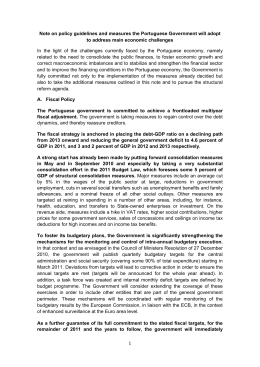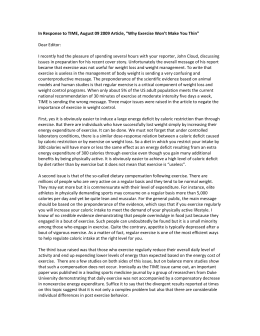The Australian Defense Industry‐Market Opportunities and Entry Strategies Analyses and Forecasts to 2017 The Australian Defense Industry‐Market Opportunities and Entry Strategies Analyses and Forecasts to 2017 1. Introduction 1.1. What is this Report About? This report offers insights into the market opportunities and entry strategies adopted by foreign OEMs (original equipment manufacturers) to gain a market share in the Australian defense industry. In particular, it offers in-depth analysis of the following: Market opportunity and attractiveness: detailed analysis of the current industry size and growth expectations during 2013–2017, including highlights of the key growth stimulators. It also benchmarks the industry against key global markets and provides detailed understanding of emerging opportunities in specific areas. Procurement dynamics: trend analysis of imports and exports, together with their implications and impact on the Australian defense industry. Industry structure: five forces analysis to identify various power centers in the industry and how these are expected to develop in the future. Market entry strategy: analysis of possible ways to enter the market, together with detailed descriptions of how existing companies have entered the market, including key contracts, alliances, and strategic initiatives. Competitive landscape and strategic insights: analysis of the competitive landscape of the defense industry in Australia, providing an overview of key defense companies (both domestic and foreign), together with insights such as key alliances, strategic initiatives, and a brief financial analysis. Business environment and country risk: a range of drivers at country level, assessing business environment and country risk. It covers historical and forecast values for a range of indicators, evaluating business confidence, economic performance, infrastructure quality and availability, labor force, demographics, and political and social risk. The Australian Defense Industry‐Market Opportunities and Entry Strategies Analyses and Forecasts to 2017 2. Executive Summary Australia is forecast to spend US$167.4 billion on its military over the forecast period The Australian defense industry is expected to grow at a CAGR of 5.13% from a value of US$31.7 billion in 2013 to US$38.8 billion by 2017. In 2009, the Australian government launched a new military modernization plan to upgrade its forces in order to counteract the threat posed by rising global terrorism, changing political dynamics in the Asia-Pacific region, and the rising number of peacekeeping operations undertaken by Australian forces. Defense expenditure as a percentage of Australia’s gross domestic product (GDP) is expected to increase from its 2012 levels of 1.8% to 2% in 2017. However, while the capital expenditure as a percentage of the defense budget peaked at 28% in 2010, the government is expected to decrease this value to 27% by 2017. This is due to the increased budget allocation for revenue expenditure in order to manage matters such as death, retirement benefits and support services. Over the forecast period, the key market opportunities in the defense industry are expected to emerge in categories such as defense information technology, unmanned aerial vehicles (UAVs), helicopters, upgraded vehicles, armory, submarine rescue vehicles, sonar systems, troop protection equipment, patrolling ships, monitoring and security equipment, and cyber security. Australia is expected to increase its arms imports by 2017 Australia imports the majority of its arms, including its aircraft and missile systems, largely from the US, Germany, Israel, Spain and France. However, while the country has been successful in its manufacture and export of military ships, the government is now actively engaged in improving the capability of its domestic defense industry through the Skilling Australian Defense Industry (SADI) program. The government is also focused on encouraging foreign OEMs (original equipment manufacturers) to outsource manufacturing in order to gain the technology to modernize its military. Therefore, Australia’s imports of advanced defense systems from foreign companies are expected to increase during the forecast period. Australian Industry Capability (AIC) plan protects its domestic industry in the absence of offsets Rather than imposing offsets on military procurement, Australia instead protects the development of its domestic industry through its Australian Industry Capability (AIC) plan, by asking the Defense Materiel Organization (DMO) to assign and monitor a series of activities for investing foreign OEMs to complete. Furthermore, contract preference is given to the bidder that can provide the maximum opportunity for the domestic defense industry as specified in the AIC plan. Subsidiaries, sub-contracting, global supply chain contracts and ministry-recognized supplier scheme provide opportunities to enter the industry The preferred entry route for most foreign OEMs keen to enter the Australian defense market has been to establish a subsidiary in the country or acquire a domestic firm. However, an increasing number of foreign OEMs are entering the market by sub-contracting business to the domestic industry or engaging the domestic industry in the global supply chain by way of direct foreign investment. In recognition, the Ministry of Defense has launched a scheme for rewarding defense suppliers that maintain a successful relationship with the Australian Defense Organization. The Australian Defense Industry‐Market Opportunities and Entry Strategies Analyses and Forecasts to 2017 Cost overruns, project delays and AIC plan hinder growth of domestic industry Frequent cost overruns and project delays reduced the credibility of domestic firms during the review period, and, subsequently, affected the growth of the defense industry. In addition, as foreign OEMs are bound by the terms attached to procurement as defined in the AIC plan, firms are often obliged to subcontract work to the insufficiently skilled domestic industry. Furthermore, the cost of labor and geographical location of Australia makes it difficult for OEMs to outsource manufacturing to Australia. !"#$%&'#()*+#$%,"$(-#,.%&+%#/&..#01#23456178557985: TABLE OF CONTENTS 1. Introduction ......................................................................................................................... 10 1.1. What is this Report About? ..........................................................................................................10 1.2. Definitions .....................................................................................................................................10 1.3. Summary Methodology .................................................................................................................12 1.4. SDI Terrorism Index ......................................................................................................................13 1.5. About Strategic Defence Intelligence (www.strategicdefenceintelligence.com) ......................13 2. Executive Summary ............................................................................................................ 14 3. Market Attractiveness and Emerging Opportunities ........................................................ 16 3.1. Defense Market Size Historical and Forecast..............................................................................17 3.1.1. Defense expenditure is projected to grow at a CAGR of 5.13% during the forecast period.................... 17 3.1.2. Defense expenditure driven by military modernization, terror threats, changing Asia-Pacific power dynamics and peacekeeping missions ............................................................................................................. 19 3.1.3. Military expenditure as a percentage of GDP is expected to increase during the forecast period .......... 20 3.2. Analysis of Defense Budget Allocation .......................................................................................22 3.2.1. Share of capital expenditure in the overall defense budget is expected to increase .............................. 22 3.2.2. Australia’s capital expenditure is expected to grow at a CAGR of 11.93% during the forecast period .... 25 3.2.3. Australia is expected to spend US$127.2 billion on revenue expenses over the forecast period ........... 27 3.2.4. Defense expenditure is expected to correspond with national economic growth ................................... 29 3.3. Homeland Security Market Size and Forecast ............................................................................31 3.3.1. Homeland security expenditure is expected to grow at a CAGR of 10.60% during the forecast period .. 31 3.3.2. Organized crime, cyber-security and maritime security to drive homeland security spending ................ 33 3.3.3. Australia faces a minimal threat from foreign terrorist organizations ..................................................... 34 3.4. Benchmarking with Key Global Markets .....................................................................................36 3.4.1. Australian defense expenditure expected to remain modest compared to leading spenders ................. 36 3.4.2. The country will continue to be a significant player in the global arms market ....................................... 38 3.4.3. Defense expenditure as a percentage of GDP to increase marginally over forecast period ................... 39 3.4.4. Australia has a moderate per-capita defense expenditure .................................................................... 40 3.5. Market Opportunities: Key Trends and Growth Stimulators ......................................................41 3.5.1. Increased surveillance needs expected to drive demand for UAVs ....................................................... 41 3.5.2. NCW program expected to drive demand for communication, data management and networking technologies .................................................................................................................................................... 41 3.5.3. Land fleet capacity expansion expected to drive demand for upgraded vehicles and armory ................ 42 3.5.4. Submarines upgrade to drive the demand for submarine rescue vehicles, sonar systems, and ship management and control systems ................................................................................................................... 42 3.5.5. Safety of troops continues to drive demand for protective equipment ................................................... 42 !"#$%&'#()*+#$%,"$(-#,.%&+%#/&..#01#23456178557985: 3.5.6. Border security concerns expected to drive demand for patrol vessels, and monitoring and security equipment ....................................................................................................................................................... 43 3.5.7. Cyber security initiatives in Australia to drive business for private organizations ................................... 43 4. Defense Procurement Market Dynamics ........................................................................... 44 4.1. Import Market Dynamics ...............................................................................................................45 4.1.1. Defense imports expected to increase considerably over the forecast period ....................................... 45 4.1.2. Germany loses market share of arms transfers with Australia to the US and France ............................ 46 4.1.3. Imports of aircraft and missiles continue to increase............................................................................. 47 4.2. Export Market Dynamics ..............................................................................................................48 4.2.1. Defense exports expected to increase during forecast period ............................................................... 48 4.2.2. Ships constitute majority of exports ...................................................................................................... 49 5. Industry Dynamics .............................................................................................................. 50 5.1. Five Forces Analysis.....................................................................................................................50 5.1.1. Bargaining power of supplier: Low to Medium ...................................................................................... 51 5.1.2. Bargaining power of Buyer: High.......................................................................................................... 51 5.1.3. Barrier to entry: High............................................................................................................................ 51 5.1.4. Intensity of rivalry: Medium to High ...................................................................................................... 51 5.1.5. Threat of Substitution: High.................................................................................................................. 51 6. Market Entry Strategy ......................................................................................................... 52 6.1. Market Regulation .........................................................................................................................52 6.1.1. AIC program ensures the participation of local industry ........................................................................ 52 6.1.2. Approval for foreign investment in defense sector set at US$ 216.2 million........................................... 53 6.2. Market Entry Route .......................................................................................................................54 6.2.1. Establishing a domestic subsidiary is the preferred market entry route ................................................. 54 6.2.2. Foreign OEMs sub-contract defense deals to domestic firms in order to enter the market..................... 55 6.2.3. Foreign OEMs offer domestic companies access to global supply chains in order to enter the industry 55 6.2.4. DRSS provides opportunities to develop strong relations with the ADO ................................................ 55 6.3. Key Challenges .............................................................................................................................56 6.3.1. Cost overruns and project delays continue to worry defense industry ................................................... 56 6.3.2. Global supply chain pose challenge for foreign OEMs .......................................................................... 57 7. Competitive Landscape and Strategic Insights ................................................................ 58 7.1. Competitive Landscape Overview ...............................................................................................58 7.2. Key Domestic Companies ............................................................................................................58 7.2.1. Raytheon Australia: Overview .............................................................................................................. 58 7.2.2. Raytheon Australia: Major Products and Services ................................................................................ 58 7.2.3. Raytheon Australia: Recent Announcements and Strategic Initiatives .................................................. 59 7.2.4. Raytheon Australia: Alliances .............................................................................................................. 59 !"#$%&'#()*+#$%,"$(-#,.%&+%#/&..#01#23456178557985: 7.2.5. Raytheon Australia: Recent Contract Wins........................................................................................... 60 7.2.6. Boeing Defense Australia: Overview .................................................................................................... 61 7.2.7. Boeing Defense Australia: Major Products and Services ...................................................................... 61 7.2.8. Boeing Defense Australia: Recent Announcements and Strategic Initiatives......................................... 62 7.2.9. Boeing Defense Australia: Alliances..................................................................................................... 62 7.2.10. Boeing Defense Australia: Recent Contract Wins................................................................................. 63 7.2.11. Saab Systems: Overview ..................................................................................................................... 64 7.2.12. Saab Systems: Major Products and Services ....................................................................................... 64 7.2.13. Saab Systems: Recent Announcements and Strategic Initiatives ......................................................... 64 7.2.14. Saab Systems: Alliances ..................................................................................................................... 65 7.2.15. Saab Systems: Recent Contract Wins.................................................................................................. 65 7.2.16. Saab Systems: Financial Analysis........................................................................................................ 66 7.2.17. General Dynamics Land Systems Australia: Overview ......................................................................... 67 7.2.18. General Dynamics Land Systems Australia: Major Products and Services ........................................... 67 7.2.19. General Dynamics Land Systems Australia: Recent Announcements and Strategic Initiatives.............. 67 7.2.20. General Dynamics Land Systems Australia: Recent Contract Wins ...................................................... 67 7.2.21. Lockheed Martin Australia: Overview ................................................................................................... 68 7.2.22. Lockheed Martin Australia: Major Products and Services ..................................................................... 68 7.2.23. Lockheed Martin Australia: Recent announcements and Strategic initiatives ........................................ 68 7.2.24. Lockheed Martin Australia: Alliances.................................................................................................... 69 7.2.25. Lockheed Martin Australia: Recent Contract Wins................................................................................ 69 7.2.26. Navantia: Overview.............................................................................................................................. 70 7.2.27. Navantia: Major Products and Services................................................................................................ 70 7.2.28. Navantia: Recent Announcements and Strategic Initiatives .................................................................. 70 7.2.29. Navantia: Alliances .............................................................................................................................. 70 7.2.30. Navantia: Recent Contract Wins .......................................................................................................... 71 7.2.31. Australian Aerospace: Overview .......................................................................................................... 72 7.2.32. Australian Aerospace: Major Products and Services ............................................................................ 72 7.2.33. Australian Aerospace: Recent Announcements and Strategic Initiatives............................................... 72 7.2.34. Australian Aerospace: Alliances ........................................................................................................... 73 7.2.35. Australian Aerospace: Recent Contract Wins ....................................................................................... 73 7.2.36. Serco Sodexho Defense Services: Overview ....................................................................................... 74 7.2.37. Serco Sodexho Defense Services: Major Products and Services ......................................................... 74 7.2.38. Serco Sodexho Defense Services: Recent Announcements and Strategic Initiatives ............................ 75 7.2.39. Serco Sodexho Defense Services: Recent Contract Wins .................................................................... 75 7.2.40. Thales Australia: Overview .................................................................................................................. 76 7.2.41. Thales Australia: Major Products and Services .................................................................................... 76 7.2.42. Thales Australia: Recent Announcements and Strategic Initiatives ....................................................... 77 !"#$%&'#()*+#$%,"$(-#,.%&+%#/&..#01#23456178557985: 7.2.43. Thales Australia: Alliances ................................................................................................................... 78 7.2.44. Thales Australia: Recent Contract Wins ............................................................................................... 78 7.3. Key Public Sector Companies ......................................................................................................79 7.3.1. ASC: Overview .................................................................................................................................... 79 7.3.2. ASC: Major Products and Services ...................................................................................................... 79 7.3.3. ASC: Recent Announcements and Strategic Initiatives......................................................................... 79 7.3.4. ASC: Alliances..................................................................................................................................... 80 7.3.5. ASC: Recent Contract Wins ................................................................................................................. 80 7.3.6. ASC: Financial analysis ....................................................................................................................... 81 8. Business Environment and Country Risk ......................................................................... 83 8.1. Demographics & Social Statistics ................................................................................................83 8.1.1. Population – Female ............................................................................................................................ 83 8.1.2. Population - Male................................................................................................................................. 84 8.2. Economic Performance ................................................................................................................85 8.2.1. Construction Output, Current Prices, Local Currency ........................................................................... 85 8.2.2. Construction Output, Current Prices, US Dollars .................................................................................. 86 8.2.3. Current Account Balance as Percentage of GDP ................................................................................. 87 8.2.4. Deposit Interest Rate ........................................................................................................................... 88 8.2.5. Exports of goods and services, current prices ...................................................................................... 89 8.2.6. Fiscal Balance as a percentage of GDP ............................................................................................... 90 8.2.7. Foreign Direct Investment .................................................................................................................... 91 8.2.8. GDP at Purchasing Power Parity ......................................................................................................... 92 8.2.9. GDP, Constant Prices (Local Currency) ............................................................................................... 93 8.2.10. GDP, Constant Prices (US$)................................................................................................................ 94 8.2.11. GDP, Current Prices (Local Currency) ................................................................................................. 95 8.2.12. GDP, Current Prices (US$) .................................................................................................................. 96 8.2.13. General Government Final Consumption Expenditure.......................................................................... 97 8.2.14. Gross Fixed Capital Formation, Current Prices .................................................................................... 98 8.2.15. Imports of goods and services ............................................................................................................. 99 8.2.16. Inflation, average consumer prices..................................................................................................... 100 8.2.17. Interest Rate (Lending) ...................................................................................................................... 101 8.2.18. Manufacturing Output, Current Prices (Local Currency Bn) ................................................................ 102 8.2.19. Manufacturing Output, Current Prices (US$ Billions) .......................................................................... 103 8.2.20. Market cap of Stock Exchange (US$ mn)........................................................................................... 104 8.2.21. US$- Exchange Rate (Annual Average) ............................................................................................. 105 8.2.22. US$- Exchange Rate (EoP) ............................................................................................................... 106 8.2.23. Wholesale Price Index ....................................................................................................................... 107 !"#$%&'#()*+#$%,"$(-#,.%&+%#/&..#01#23456178557985: 8.3. Energy and Utilities ..................................................................................................................... 108 8.3.1. Crude Oil Distillation Capacity............................................................................................................ 108 8.3.2. Electricity Installed Capacity .............................................................................................................. 109 8.3.3. Fossil Fuels Proved natural gas reserves........................................................................................... 110 8.3.4. Fossil Fuels Proved natural gas reserves........................................................................................... 111 8.3.5. Fossil Fuels- Proved oil reserves ....................................................................................................... 112 8.3.6. Hydroelectricity Installed Capacity...................................................................................................... 113 8.3.7. Natural Gas Consumption.................................................................................................................. 114 8.3.8. Natural Gas Imports........................................................................................................................... 115 8.3.9. Natural Gas Production...................................................................................................................... 116 8.3.10. Net Conventional Thermal Electricity Generation ............................................................................... 117 8.3.11. Net Geothermal, Solar, Wind, and Wood Electric Power Generation .................................................. 118 8.3.12. Net Hydroelectric Power Generation .................................................................................................. 119 8.3.13. Petroleum, Consumption ................................................................................................................... 120 8.3.14. Petroleum, Production ....................................................................................................................... 121 8.4. Minerals ....................................................................................................................................... 122 8.4.1. Coal Consumption ............................................................................................................................. 122 8.4.2. Coal Production ................................................................................................................................. 123 8.5. Social & Political Risk ................................................................................................................. 124 8.5.1. Political Stability Index ....................................................................................................................... 124 8.5.2. Transparency Index ........................................................................................................................... 125 8.6. Technology .................................................................................................................................. 126 8.6.1. Fixed Broadband Internet Subscribers (Thousands) ........................................................................... 126 8.6.2. Patents Granted ................................................................................................................................ 127 8.6.3. Software Patents ............................................................................................................................... 128 9. Appendix ............................................................................................................................ 129 9.1. Contact Us ................................................................................................................................... 129 9.2. About SDI ..................................................................................................................................... 129 9.3. Disclaimer .................................................................................................................................... 129 !"#$%&'#()*+#$%,"$(-#,.%&+%#/&..#01#23456178557985: LIST OF FIGURES Figure 1: Australian Defense Expenditure, 2008 –2012 ..............................................................................................................................................17 Figure 2: Australian Defense Expenditure, 2013–2017 ...............................................................................................................................................18 Figure 3: Australian GDP Growth vs. Defense Expenditure Growth and Defense Expenditure as Percentage of GDP Growth, 2008–2012......... 20 Figure 4: Australian GDP Growth vs. Defense Expenditure Growth and Defense Expenditure as Percentage of GDP Growth, 2013–2017........ 21 Figure 5: Australian Defense Budget Split Between Capital and Revenue Expenditure (%), 2008–2012 ................................................................ 23 Figure 6: Australian Defense Budget Split Between Capital and Revenue Expenditure (%), 2013–2017 ................................................................ 24 Figure 7: Australian Capital Budget Allocation (US$ billion), 2008–2012 ...................................................................................................................25 Figure 8: Australian Capital Budget Allocation (US$ billion), 2013–2017 ...................................................................................................................26 Figure 9: Australian Revenue Budget Allocation (US$ billion), 2008–2012 ................................................................................................................27 Figure 10: Australian Revenue Budget Allocation (US$ billion), 2013–2017 ..............................................................................................................28 Figure 11: Australian Defense Expenditure Growth and GDP Growth(%), 2008–2012 .............................................................................................29 Figure 12: Australian Defense Expenditure Growth and GDP Growth(%), 2013–2017 .............................................................................................30 Figure 13: Australian Homeland Security Budget (US$ million), 2008–2012 .............................................................................................................31 Figure 14: Australian Homeland Security Budget (US$ million), 2013–2017 .............................................................................................................32 Figure 15: SDI Terrorism Heat Map, 2011 ...................................................................................................................................................................34 Figure 16: SDI Terrorism Index, 2011 ..........................................................................................................................................................................35 Figure 17: Benchmarking with Key Markets – 2007–2011 vs. 2012–2016 .................................................................................................................37 Figure 18: Defense Expenditure of the World’s Largest Military Spenders (US$ Billion), 2011 and 2016 ............................................................... 38 Figure 19: Defense Expenditure as a Percentage of GDP of Largest Military Spenders (%), 2011 ..........................................................................39 Figure 20: Per-capita Defense Expenditure of the Largest Military Spenders in the World (US$), 2011 .................................................................. 40 Figure 21: Australian Defense Imports (TIV s), 2007–2011 ........................................................................................................................................45 Figure 22: Australian Defense Imports by Country based on TIVs*, 2007–2011 and 2011 .......................................................................................46 Figure 23: Australian Defense Imports by Weapons based on TIVs*, 2007–2011 and 2011 ....................................................................................47 Figure 24: Australian Defense Exports (TIVs), 2007–2011 .........................................................................................................................................48 Figure 25: Australian Defense Exports by Weapons based on TIVs*, 2007–2011 and 2011 ....................................................................................49 Figure 26: Industry Dynamics – Porter’s Five Forces Analysis ...................................................................................................................................50 Figure 27: ASC – Revenue Trend Analysis (AUD Million), 2006–2010 ......................................................................................................................81 Figure 28: ASC – Operating Profit Trend Analysis (AUD Million), 2006–2010 ...........................................................................................................82 Figure 29: ASC – Net Profit Trend Analysis (AUD Million), 2006–2010 ......................................................................................................................82 Figure 30: Australian Population – Female (In Millions), 2008–2017 ..........................................................................................................................83 Figure 31: Australian Population – Male (In Millions), 2008–2017 ..............................................................................................................................84 Figure 32: Australian Construction Output, Current Prices, Local Currency (In Billions), 2001–2010 ...................................................................... 85 Figure 33: Australian Construction Output, Current Prices, US Dollars (In Billions), 2001–2010 ..............................................................................86 Figure 34: Australian Current Account Balance as Percentage of GDP, 2008–2017 ................................................................................................87 Figure 35: Australian Deposit Interest Rate, 2001–2010 .............................................................................................................................................88 Figure 36: Australian Exports of goods and services, current prices (US$ Billion), 2001– 2010 ...............................................................................89 Figure 37: Australian Fiscal Balance as a percentage of GDP, 2001–2010 ...............................................................................................................90 Figure 38: Australian Foreign Direct Investment (US$ Billion), 2001–2010 ................................................................................................................91 Figure 39: Australian GDP at Purchasing Power Parity (US$ Billion), 2006–2015 ....................................................................................................92 Figure 40: Australian GDP at Constant Prices (Local Currency Billion), 2006–2015 ................................................................................................. 93 Figure 41: Australian GDP at Constant Prices (US$ Billion), 2006–2015 ...................................................................................................................94 Figure 42: Australian GDP at Current Prices (Local Currency Billion), 2006–2015....................................................................................................95 Figure 43: Australian GDP at Current Prices (US$ Billion), 2006–2015 .....................................................................................................................96 Figure 44: Australian General Government Final Consumption Expenditure (US$ Billion), 2001–2010 .................................................................. 97 Figure 45: Australian Gross Fixed Capital Formation, Current Prices (US$ Billion), 2001–2010 ..............................................................................98 Figure 46: Australian Imports of goods and services (current US$ Billion), 2001–2010 ............................................................................................99 Figure 47: Australian Inflation, average consumer prices, 2008–2017 .....................................................................................................................100 Figure 48: Australian Lending Interest rate, 2001–2010 ............................................................................................................................................101 Figure 49: Australian Manufacturing Output, Current Prices (Local Currency Billion), 2001–2010 .........................................................................102 Figure 50: Australian Manufacturing Output, Current Prices (US$ Billion), 2001–2010 ...........................................................................................103 Figure 51: Australian Market cap of Stock Exchange (US$ mn), 2001–2010 ...........................................................................................................104 Figure 52: Australian US$- Exchange Rate (Annual Average), 2002–2011 .............................................................................................................105 Figure 53: Australian US$- Exchange Rate (EoP), 2002–2011 ................................................................................................................................106 !"#$%&'#()*+#$%,"$(-#,.%&+%#/&..#01#23456178557985: Figure 54: Australian Wholesale Price Index, 2000–2009 .........................................................................................................................................107 Figure 55: Australian Crude Oil Distillation Capacity(Thousand Barrels Per Cal Day), 2000–2009 ........................................................................108 Figure 56: Australian Electricity Installed Capacity (Million Kilowatts), 2000–2009 ..................................................................................................109 Figure 57: Australian Fossil Fuels Proved natural gas reserves (Trillion Cubic Feet), 2002–2011 .........................................................................110 Figure 58: Australian Fossil Fuels Proved natural gas reserves (Trillion Cubic Feet), 2002–2011 .........................................................................111 Figure 59: Australian Fossil Fuels Proved oil reserves (Billion Barrels), 2002–2011 ...............................................................................................112 Figure 60: Australian Hydroelectricity Installed Capacity (Million Kilowatts), 2000–2009 ........................................................................................113 Figure 61: Australian Natural Gas Consumption (Billion Cubic Feet), 2001–2010 ...................................................................................................114 Figure 62: Australian Natural Gas Imports (Billion Cubic Feet), 2006–2010 ............................................................................................................115 Figure 63: Australian Natural Gas Production (Billion Cubic Feet), 2001–2010 .......................................................................................................116 Figure 64: Australian Net Conventional Thermal Electricity Generation (Billion Kilowatt hours), 2001–2010 .........................................................117 Figure 65: Australian Net Geothermal, Solar, Wind, and Wood Electric Power Generation (Billion Kilowatt hours), 2001–2010 .......................... 118 Figure 66: Australian Net Hydroelectric Power Generation (Billion Kilowatt hours), 2001–2010 .............................................................................119 Figure 67: Australian Petroleum Consumption (Thousand Barrels Per Day), 2002–2011 .......................................................................................120 Figure 68: Australian Petroleum Production (Thousand Barrels Per Day), 2002–2011 ...........................................................................................121 Figure 69: Australian Coal Consumption (Thousand Short Tons), 2001–2010 ........................................................................................................122 Figure 70: Australian Coal Production (Thousand Short Tons), 2001–2010 ............................................................................................................123 Figure 71: Australian Political Stability Index, 2002–2010 .........................................................................................................................................124 Figure 72: Australian Transparency Index, 2002–2011 .............................................................................................................................................125 Figure 73: Australian Fixed Broadband Internet Subscribers (Thousands), 2001–2010..........................................................................................126 Figure 74: Australian Patents Granted, 2002–2011 ...................................................................................................................................................127 Figure 75: Australian Software Patents, 2006–2011..................................................................................................................................................128 8 !"#$%&'#()*+#$%,"$(-#,.%&+%#/&..#01#23456178557985: LIST OF TABLES Table 1: Australian Defense Expenditure, 2008–2012 ................................................................................................................................................17 Table 2: Australian Defense Expenditure, 2013–2017 ................................................................................................................................................18 Table 3: Australian GDP Growth vs. Defense Expenditure Growth and Defense Expenditure as Percentage of GDP Growth, 2008–2012 .......... 20 Table 4: Australian GDP Growth vs. Defense Expenditure Growth and Defense Expenditure as Percentage of GDP Growth, 2013–2017 .......... 21 Table 5: Australian Defense Budget Split Between Capital and Revenue Expenditure (%), 2008–2012................................................................. 23 Table 6: Australian Defense Budget Split Between Capital and Revenue Expenditure (%), 2013–2017................................................................. 24 Table 7: Australian Capital Budget Allocation (US$ billion), 2008–2012 ....................................................................................................................25 Table 8: Australian Capital Budget Allocation (US$ billion), 2013–2017 ....................................................................................................................26 Table 9: Australian Revenue Budget Allocation (US$ billion), 2008–2012 .................................................................................................................27 Table 10: Australian Revenue Budget Allocation (US$ billion), 2013–2017 ...............................................................................................................28 Table 11: Australian Defense Expenditure Growth and GDP Growth (%), 2008–2012 .............................................................................................29 Table 12: Australian Defense Expenditure Growth and GDP Growth(%), 2013–2017 ..............................................................................................30 Table 13: Australian Homeland Security Budget (US$ million), 2008–2012 ...............................................................................................................31 Table 14: Australian Homeland Security Budget (US$ million), 2013–2017 ...............................................................................................................32 Table 15: Benchmarking with Key Markets – 2007–2011 vs. 2012–2016 ..................................................................................................................36 Table 16: FATA Approval for Acquisition in Defense in Australia................................................................................................................................53 Table 17: Key Foreign OEMS and Subsidiaries ...........................................................................................................................................................54 Table 18: Small Projects with Cost Overruns ...............................................................................................................................................................56 Table 19: Major Projects with Cost Overruns ...............................................................................................................................................................56 Table 20: Project Delays ...............................................................................................................................................................................................57 Table 21: Raytheon Australia – Major Products & Services ........................................................................................................................................58 Table 22: Raytheon Australia – Alliances .....................................................................................................................................................................59 Table 23: Raytheon Australia – Recent Contract Wins ................................................................................................................................................60 Table 24: Boeing Defense Australia – Major Products & Services..............................................................................................................................61 Table 25: Boeing Defense Australia – Alliances ..........................................................................................................................................................62 Table 26: Boeing Defense Australia – Recent Contract Wins .....................................................................................................................................63 Table 27: Saab Systems – Major Products & Services ...............................................................................................................................................64 Table 28: Saab Systems – Alliances ............................................................................................................................................................................65 Table 29: Saab Systems – Recent Contract Wins .......................................................................................................................................................65 Table 30: General Dynamics Land Systems Australia – Major Products & Services ................................................................................................. 67 Table 31: General Dynamics Land Systems Australia – Recent Contract Wins.........................................................................................................67 Table 32: Lockheed Martin Australia – Major Products & Services.............................................................................................................................68 Table 33: Lockheed Martin Australia – Alliances .........................................................................................................................................................69 Table 34: Lockheed Martin Australia – Recent Contract Wins ....................................................................................................................................69 Table 35: Navantia – Major Products & Services .........................................................................................................................................................70 Table 36: Navantia – Alliances......................................................................................................................................................................................70 Table 37: Navantia – Recent Contract Wins ................................................................................................................................................................71 Table 38: Australian Aerospace – Major Products & Services ....................................................................................................................................72 Table 39: Australian Aerospace – Alliances ................................................................................................................................................................. 73 Table 40: Australian Aerospace – Recent Contract Wins ............................................................................................................................................73 Table 41: Serco Sodexho Defense Services – Major Products & Services ................................................................................................................74 Table 42: Serco Sodexho Defense Services – Recent Contract Wins........................................................................................................................75 Table 43: Thales Australia – Major Products & Services .............................................................................................................................................76 Table 44: Thales Australia – Alliances..........................................................................................................................................................................78 Table 45: Thales Australia – Recent Contract Wins ....................................................................................................................................................78 Table 46: ASC – Major Products & Services ................................................................................................................................................................79 Table 47: ASC – Alliances.............................................................................................................................................................................................80 Table 48: ASC – Recent Contract wins ........................................................................................................................................................................80
Download

